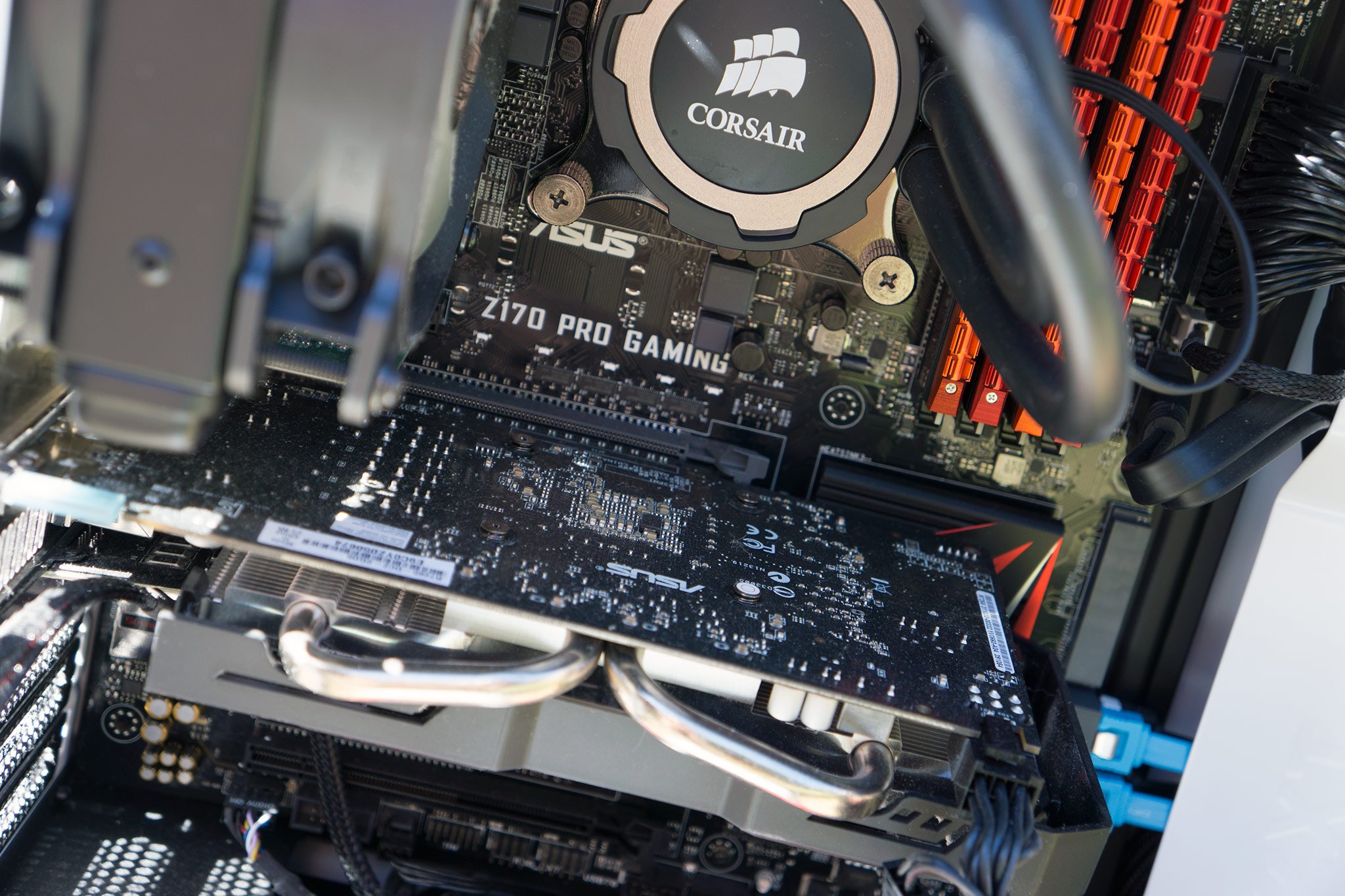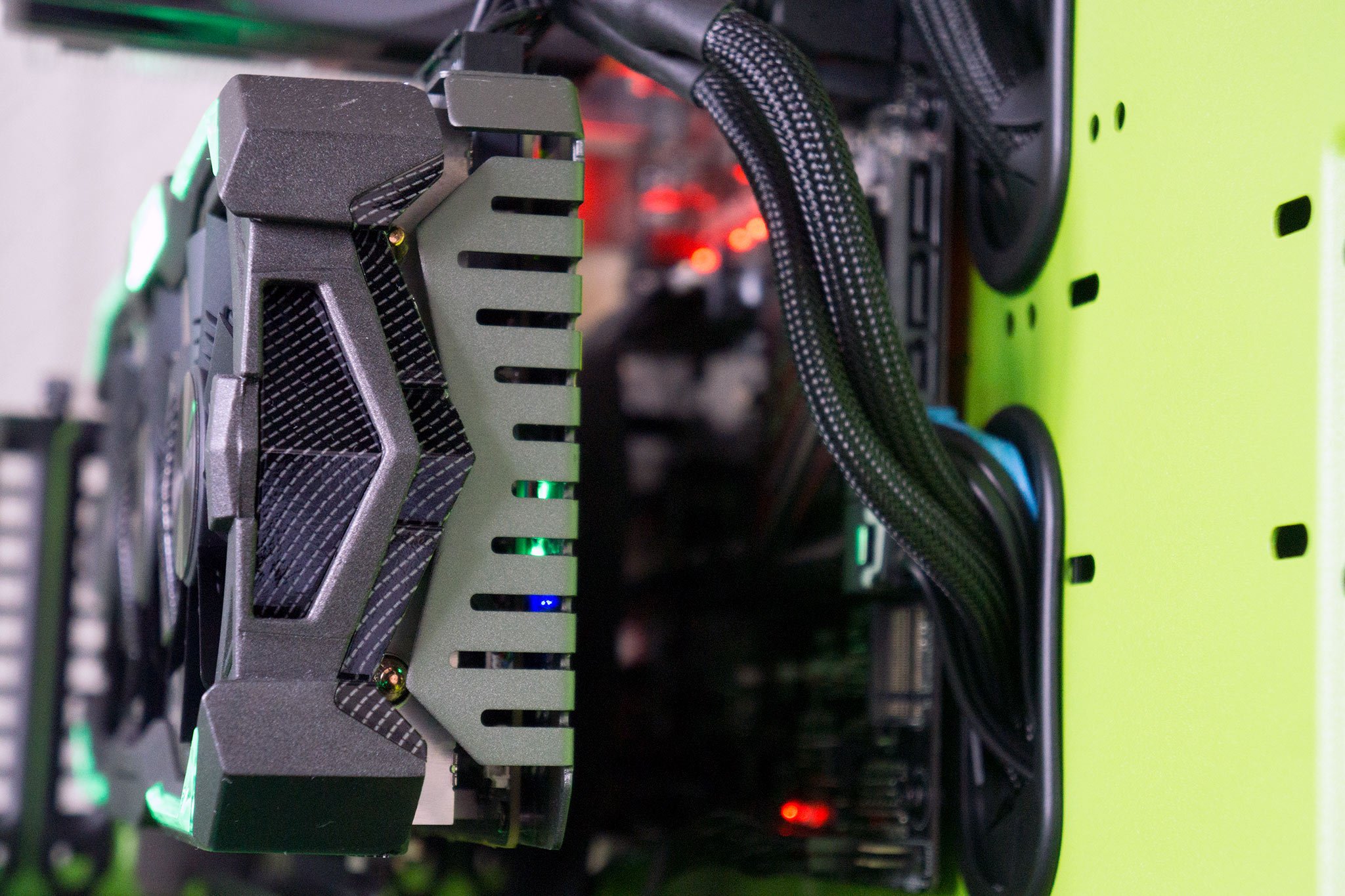Ways to help prevent your desktop PC's GPU from sagging
GPU sagging occurs when the graphics card is too heavy for the case bracket or PCB to support, usually caused the massive cooler shrouds. Here are some ways to combat this.

Graphics processing units (better known as GPUs) have grown considerably in size, way past the limit that was expected of this plug-in cards. Should you pick up a new GTX 1080 or RX 480 graphics card or any of our picks for best graphics card, you may notice what is called "GPU sagging." This is when the surrounding cooling shroud and solution is too heavy for the PCB and supporting case bracket to uphold. Thus the card bends a little.
If you're not particularly bothered about your GPU sagging, fear not, as PCBs and the units themselves are tested for case drops, intense vibrations, and sudden movements, as well as flexing in general. Your card won't suddenly cease to function as designed, but it can apply a look that system builders don't wish to see when they gaze into the case window.
GPU manufacturers have attempted to weigh in on implementing their own solutions, which include installing backplates onto the PCB to add strength, as well as using optimal materials in constructing the cooling solution. Still, even the latest and most expensive cards can look to be drooping on the far side of the unit, so just what can you do to rectify this issue? Luckily, there are a few steps one can try to fix it.
PCI Cables
More powerful GPUs require extra power to be delivered through the addition of one or more cables that connect the unit directly to the power supply. These can be used to help flatten out the bend. All that's required is to ensure that there's enough tension on the cables and that they connect to the GPU from above. A cable tie or two may be required to achieve the tension required to lift the GPU up.
Case Bracket

If your case can support an optional PCI bracket for installing cards upright, we'd recommend you give this a go. A PCI extension cable will be required (usually supplied with such cases) and this should help in eliminating GPU sag altogether. Just make sure you don't overload the bracket, or that will begin to flex.
Building Blocks
Lego is a creative way to help support your heavy GPU, be it forming some complicated custom structures or a simple tower that bolsters the underbelly of the component. It's cheap, effective and can look rather cool in some PC builds.
Trusty Wire
Fetch some inexpensive fishing wire, and you can use this to tie the top half that's sagging to the case from above. Job done.
All the latest news, reviews, and guides for Windows and Xbox diehards.

That's but a few ways you can help support your GPU from sagging under its own weight. It's worth reminding that the actual flex of the PCB won't necessarily damage the component, so if you don't have a side window and don't mind it flexing a little, it's perfectly safe to hold off and continue as you are.
Hit us up in the comments if you've used other solutions, like say some match sticks.

Rich Edmonds was formerly a Senior Editor of PC hardware at Windows Central, covering everything related to PC components and NAS. He's been involved in technology for more than a decade and knows a thing or two about the magic inside a PC chassis. You can follow him on Twitter at @RichEdmonds.
